
The Devil From a Hoodoo Perspective
In African American hoodoo, the Devil is often seen as a trickster figure who tests individuals but can also be invoked for personal gain through rituals. The man in black is associated with mystery and the crossing of boundaries, sometimes considered a spiritual guide or a figure who facilitates communication with the supernatural. Both concepts intertwine with the rich tapestry of hoodoo beliefs, reflecting a nuanced perspective on the spiritual realm.
This paper introduces a fictional story of a boy named Michael. His story illustrates the feeling behind the academic knowledge and lore. It also includes antidotes of my own experience to provide the unique perspective of a practicing hoodoo. Finally, and perhaps most noteworthy, this paper includes excerpts from a thesis published on May, 3rd, 2017, written by Brandon Render for Georgia State University Department of Religious Studies. This entire paper should be read continuously as one body of work. I have separated the material to make it clear where one stops and another begins. It is my hope that this offering can provide further clarity and understanding for those who are honestly pursuing knowledge on these traditional workings. Nothing in these stories is meant to be performed in real life by practitioners, but for those who have eyes to see, I wish you the best of luck in your endeavors.
Michael’s Story Part 1
Written by Sen Elias
Have you heard of the spirit known as Old Scratch? They speak about him in whispers late at night when they think no one's listening. I think they’re talking about the Devil, but they say he's done good things for them, so he might be something else altogether. He might be an angel for all I know. They say he can grant wishes if you offer him something in return. I can't fight the feeling of going and finding out for myself. I don't own any silver or gold, so what could I possibly offer in return? The preacher always says that the Devil is fighting for souls, so I might just offer him that. What does a poor farmer boy with no wife and no family need with a soul anyways? I might as well exchange it for something useful.
I wonder if God would be mad at me for offering my soul to the Devil. The preacher says that God created everything, he must have created the Devil too. Now, why would he create something if it wasn't supposed to be used? Surly God would understand my plight. I wasn't blessed with riches or love, how else am I supposed to live a good life? God would have given me money and a family if didn't want me to take things into my own hands. Besides, no one will ever know what I’ve done, not even the preacher. I need to listen to the old folk whisper about him some more if I want to know who he really is and where to find him.
Sen Elias
African spiritual systems don't teach about an ultimate good and evil which are eternally in opposition to each other. Instead the lesson is that all polar opposites work together in the world to create harmony. Light and dark, good and bad, right and wrong are all necessary aspects of creation. All of creation is sacred and worthy of honor and the utmost respect. In being introduced to characters like the Devil, I imagine that our predecessors might have seen two deities who were both able to bless and curse. I imagine that both God and the Devil were seen as the extreme polarity of something greater than either of them.
The Slaves' Devil: The Parallel between Experiences of Slavery and Christian Conversion
Brandon Render
“If the slave experience in America, especially the Antebellum South, taught them that honor is an important character trait and that honor is gained by ownership, then it is not a coincidence that Christian slaves understood their conversion in terms of ownership and property. A major theme present in many conversion narratives is the idea of “belonging” to god or the devil. The conversion narratives often reflect the “Pauline notion of slavery...that one is either a slave to sin or a slave
to righteousness, but every person has a spiritual ‘master’ above him.”3 While acknowledging that the slave has the power of choice, which is significant, in Christianity, the slave’s choice of being a servant of god or of the devil demonstrates that notion of ownership present in narratives. Therefore, honor, which is fused to ownership in slavery, is given to the spiritual owner of the slave. This idea leads to the understanding that when the slave fails to convert, then the slave, by default, is in service of the devil. The devil, in the mind of the Christian enslaved person, gains honor when conversion to Christianity is impeded.”
2 Pierre Bourdieu, Masculine Domination (Stanford, CA: Stanford University Press, 2001), 9.
3 Yolanda Pierce, Hell Without Fires, 20.
Michael’s Story Part 2
Written by Sen Elias
I listened carefully as Granny spoke about where to find the spirit of Old Scratch and how to summon his spirit. She said that some people summon him at the crossroads and others can call him at the cemetery. I had to go to either a crossed road or a cemetery at night dressed in all black and wearing a hat to cover my head. I had to wear a crucifix necklace for protection. I had to begin by saying the Lord's prayer, for further protection against the tricks that Old Scratch would surely play on my mind. After saying the Lord’s prayer three times, she said to lay down three pennies, a bottle of whiskey, and a cigar along with my greatest offering. After laying down my offering, I had to say the Lord’s prayer in reverse and knock three times on the ground and say three times:
“Man in black, Old dirty Scratch, I have work for you to do.”
After saying this three times I should tell him my wish and what I was willing to exchange in return for his work, and then I should wait for a while for his spirit to appear. If his spirit does not appear in awhile, knock three times again and repeat:
“Man in black, Old dirty Scratch, I have work for you to do.”
Granny said that he would appear as a dapper white man dressed all in black with a rimmed hat or as a young innocent looking child. “When his spirit comes to you, hold your crucifix necklace and remember your faith in God. Your faith will protect you from Old Scratches tricks.” Granny said. “That old Devil will ask for even more, no matter how great the offering is, you must deny him more. Next, he will pretend to be your friend, and ask again in the sweetest and most inviting tone. You must deny him again. Then, he will threaten evil upon you and your household if you do not give him what he asks for. This is where you need to call upon the names of God to command him:
“In the name of El Sheddi, in the name of Adoni, in the name of Elohim, I command you to grant me my wish in exchange for *blank* (whatever your greatest offering is)”
The Slaves' Devil: The Parallel between Experiences of Slavery and Christian Conversion
Brandon Render
“Before applying the theoretical lens to the narratives, it is necessary to understand the social and religious environment of the Antebellum South in which the narratives were written. The devil, often portrayed as an evil spiritual being, is an antagonist in several religious traditions. The concept of the devil is popularized by its usage in the Abrahamic faiths. Additionally, the function of the devil can be different depending on the religious practice. In the American context, the devil is commonly understood through a Protestant Christian lens.
The Protestant devil is particularly important for this project due to the influence of Protestantism among enslaved Africans. In looking at a wider history, the devil is an extremely popular figure. Past and contemporary pop culture is littered with references to the devil. Scholars and Christian theologians give significant attention to the devil when trying to explain and create rationales for evil. For Christian slaves, what makes the devil significant is not its popularity, rather it is the perception that the devil plays the role of the villain in the Christian religious world.”
Sen Elias
What I find most interesting about working with the Devil from a hoodoo perspective is that it can take the form of many invocations found in ceremonial magic. It begins with a prayer to God which may seem contradictory, but if one can worship God and the Devil as polar opposites of something greater, then it would make sense to first invoke the protection of the greatest good before calling on the power of the greatest evil. In my experience, this way of structuring an invocation to a catholic spirit displays wisdom and knowledge which the spirit respects and adheres to. In a lot of ways, the exchange of something valuable for some gift or power is like a very honest and transparent contract. If one is smart and looks at the fine print and takes measures of protection beforehand, you could end up making a very good deal.
Michael’s Story Part 3
Written by Sen Elias
So, I did the spell and the spirit of Old Scratch did come to me. I thought he would appear in a puff of smoke like in the picture shows, but he was just a man walking down the long and winding road who happened to be traveling at the time of my call. Gammy was right, I did everything she said and he said everything she said he would. I told Old Scratch that I would exchange my soul for wealth and love that night. I thought there would be some paper to sign or some loud closure of the deal, but he just smiled softly, tipped his hat to me and continued down the road.
Grammy said that when the deal was done, you should turn away from the offering and walk away without looking back. I did exactly that. The next morning, I couldn't help my curiosity, I returned to the spot where I had done the spell to see what had come of my offerings. The Sun was high that morning, so I decided to wait until sundown to travel that long dirt road. When I arrived at my spot that evening, I returned to nothing at all. Perhaps that wandering stranger had turned around and collected the free gifts. I found it strange that what I had left was now gone, but I didn't see the gates of Hell open to swallow them, and they couldn't have just walked away. I considered my deal accepted and returned back home down that old dirt road.
Friday Jones Story
Days of Bondage: Autobiography of Friday Jones records the life of a former North Carolina male slave, named Friday Jones.
“Unlike many of the slave accounts presented in this project, Friday Jones was illiterate at the time of its publishing. Jones’ narrative was penned by an unnamed editor of Washington D.C. Commercial Publishing Company in 1883. The narrative reveals that Jones was born in 1810 in Raleigh, North Carolina. Jones spent the entirety of his enslavement in North Carolina. Despite him being a former slave, Jones was embraced by the state’s white community. Following his death in 1887, a local newspaper printed an obituary describing Jones’ value to the community. His narrative reflects the adversities faced by black
individuals as a result of the horrors of American slavery. Consistent with many other slave narratives written in the nineteenth century, Jones utilized religion as a mechanism for overcoming his slave experience. He recalled that his mother, who was separated from him at an early age, was dedicated to Christian religious practices. However, Jones’ father, also separated from him during childhood, neglected the Christian religion. Jones describes his father as a“desperate wicked man” from whom Jones was physically and emotionally estranged.21 Not wanting to follow in his father’s example, Jones makes converting to Christianity a priority in his life. In his attempt to convert, Jones encounters several obstacles. The starkest obstacle is Jones’ brief conversation with the devil. Jones records:
I made many attempts to bow and pray to God, but failed to be in earnest. His spirit followed so long I had to give up my work and bow and pray. On one occasion I went out and tried to pray to God and raised up and felt worse than I did before. I bowed down, the Lord spoke to me and said, never can you obtain religion while you continue drinking whiskey. This was in 1851. I then ceased to drink, the devil got with me, told me it was all imagination and that I could take whiskey moderately two or three times a day and seek my salvation too. I did not know it was He at that time, but I yielded to Him. I turned to and drank again as usual.22
Jones’ depiction of the devil displays an intent, on the devil’s part, to manipulate the slave from following God’s instructions for conversion. Additionally, attention must be paid to Jones’ acknowledgment that at the time of this particular experience he was not aware that it was the devil inciting him to continue to drink alcohol. Given Jones’ Christian mother and religious climate of the American South, it is highly unlikely that Jones was not familiar with the concept of the devil. However, it is probable that Jones was aware of the existence of a devil, but failed to grasp its function. More than likely, after religious education, Jones came to believe it was the devil inspiring him to reject true conversion.
It can be argued that Jones’ experience as a slave in North Carolina provides the framework for his depiction of the devil. It is possible that Jones, unconsciously, sees his interaction with the devil as representative of his struggles to accept his status as slave. His narratives mentioned that Jones had a desire to be both converted and to receive physical freedom. However, the devil used whiskey as a way to lure Jones away from what Jones feels was God’s instruction for conversion. Initially, Jones finds it easier, possibly safer, to follow the devil’s suggestion, however the struggle of choosing between God’s instruction and the devil’s instruction is key. The institution of slavery puts Jones in a similar position.
While freedom was his ultimate objective, accepting his status as a slave gave Jones a measure of security in that following the instructions of the slave master would likely reduce physical punishment. However, in accepting a slave status, Jones would have negated his goal of freedom. Likewise, Jones’ goal of salvation was hindered when he succumbed to the complacency of drinking whiskey. By initially choosing the devil’s instructions over God’s command, Jones avoided any retaliation from the devil. Jones’ conversion story demonstrated a struggle to navigate between his ultimate desires and the consequences of pursuing those desires. The devil functioned similarly as slave master in that the devil contended against Jones achieving spiritual freedom.”
20 Charles Johnson, ed., “Hooked in the Heart” in God Struck Me Dead (Philadelphia, United Church Press, 1969), 21.
21 Friday Jones, Days of Bondage. Autobiography of Friday Jones. Being a Brief Narrative of His Trials and Tribulations in Slavery (Washington, DC: Commercial Pub. Co., 1883), 1
22 Friday Jones, Days of Bondage, 2.
Michael’s Story Part 4
Written by Sen Elias
A month had passed since I did the deed.
Right as rain a wife came to me.
She saw me in the field one day.
She said she simply could not look away.
She sent me to the workhouse to ask if they needed help.
I was a good worker for the job, the boss said he felt.
On that day I was employed.
And my wife was overjoyed.
My mind wandered to the darksome sight,
Of the stranger on that night.
It seemed my wishes had come true.
And I wondered when my soul was due.
Ten years have passed since then.
I could not shake the fear within.
When would the Devil win?
Thirty years have passed since then.
I witnessed the deaths of all my kith and kin.
Here I sit all alone.
Only if I had truly known the cost,
Perhaps my spirit wouldn't be lost.
The Slaves' Devil: The Parallel between Experiences of Slavery and Christian Conversion
Brandon Render
“Ultimately, the struggle for freedom is at the heart of the narratives presented in this study. What lies underneath the narrators’ struggle for spiritual freedom is the struggle for power. This power struggle, as seen in the narratives, reflects the need for power in the narrators’ physical reality. Similar to the manner in which the slave struggles with the slave master for the power to be free, the narrators see the devil as a slave master typology from which the convert has to strive with in order to fully convert to Christianity. In seeing the enslaved African and the convert’s struggle for freedom as a desire for power, narrators show that their ultimate concern goes beyond simply ending slave labor.
The ultimate concern is the fulfillment of the yearning to have the necessary power to experience freedom and equality in every area of society. The legal protections of the Emancipation Proclamation and the Thirteenth Amendment did not entirely grant freedom and equality to the slave. However, in trying to find a solution to their lack of power, religion became the entity the African American community continuously grasped to equip them with the necessary strength to oppose inferior notions of the black body. Ultimately, the devil in conversion narratives seems to be symbolic for not only the slave’s dual oppression, but the devil is also a reminder that despite insurmountable oppression, freedom and equality can be obtained.
CONCLUSION
As revealed in the above analysis, the religious world of slaves is a web of complex ideas. The religious themes and characters that make up this web are rooted in their experiences as slaves. Paul Radin contends that “in the days of slavery, an adaptation to the external world in which slaves lived was blocked completely except on a very superficial level. Only in an inner world could the Negroes develop a scale of values and fixed points of vantage from which to judge the world around them and themselves.”40 The inner world which Radin speaks of is the religious world of the enslaved community.
The scale of values and the fixed points of vantage are not new, rather they adapted from their physical reality and then modified to meet the specific needs of the slave community. As a result of their physical reality denying the slave both honor and power, the slave narratives demonstrate a religious world where the slave has the opportunity to gain both. However, much like the slave’s physical reality in which the slave master boasted honor and power, the devil in the slave narratives possessed the honor and power desired by the convert.
The similarities between the slave master and the devil are not a coincidence. Throughout this paper, it is shown that slavery was the lens through which the slave understood the self and the surrounding world. By combining Patterson’s argument of timocracy and Butler’s understanding of subjection with Bourdieu’s theory of social homology, the devil was created to be a mirror image of the institution of slavery. As Pierce pointed out, the slave community gave the devil double meaning. While on the surface the devil was the evil spiritual being of Protestant Christianity, beneath the surface the devil became a symbol for the slave owner. As a result, images of the devil in the community of enslaved Africans add to the complexities of the slaves’ religious world.
Furthermore, this project contends that the enslaved Africans modified the Christian character of the devil to represent not only their obstacles to obtaining spiritual freedom, but the devil signifies the inhumane treatment the institution of slavery heaped upon early African American communities. With various musical, theological, and cultural representations of the devil, studying the devil through the eyes of the slave narrators allows for the slave community to add their depiction to a growing collage of the devil. Focusing this project on the slave community opens the door for future scholarship to examine the variety of depictions of the devil in African American society.”
40 Paul Radin, “Status, Fantasy, and the Christian Dogma,” vii.
Sen Elias
The Trans Atlantic Slave Trade was indeed evil, it brought thousands of previously free people to America as slaves. It seems like the biggest contradiction to me, that under those conditions I would be expected to not only learn, but understand a religion which was foreign to me. I would obviously see it through the spiritual lens I understood before becoming a slave. This is the true beauty of both the God and the Devil in hoodoo cosmology. It is fully within our right to work with both freely when one considers the conditions in which they were both originally introduced. To hoodoo folks, the Devil might be more of friend than an enemy, and white Jesus might be more of an enemy than a friend, thus they meet somewhere in the middle of light and dark. The Devil represented freedom and God represented submission and in order to become free, both were a pathway to the ultimate goal.
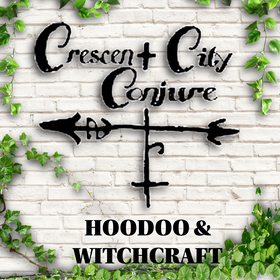
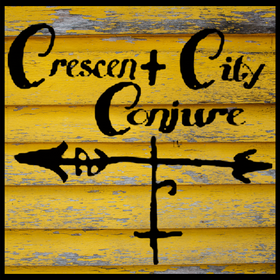
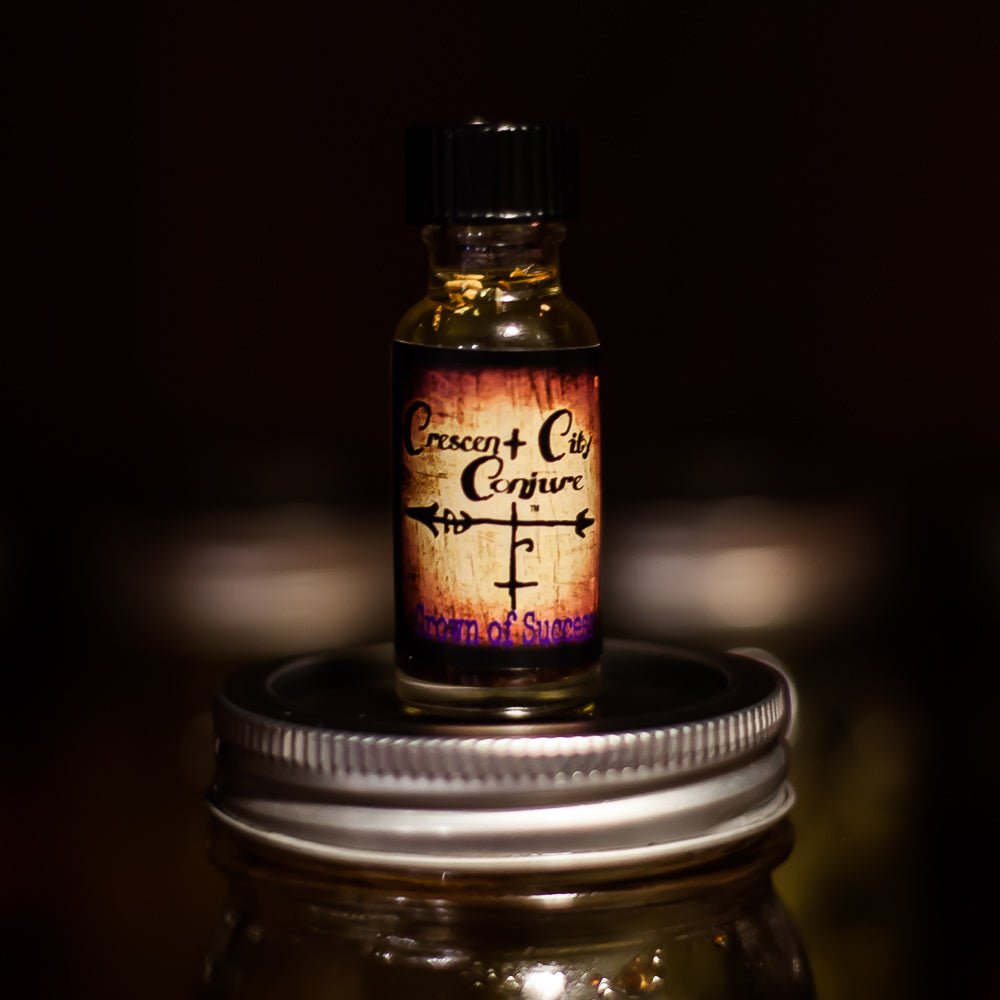

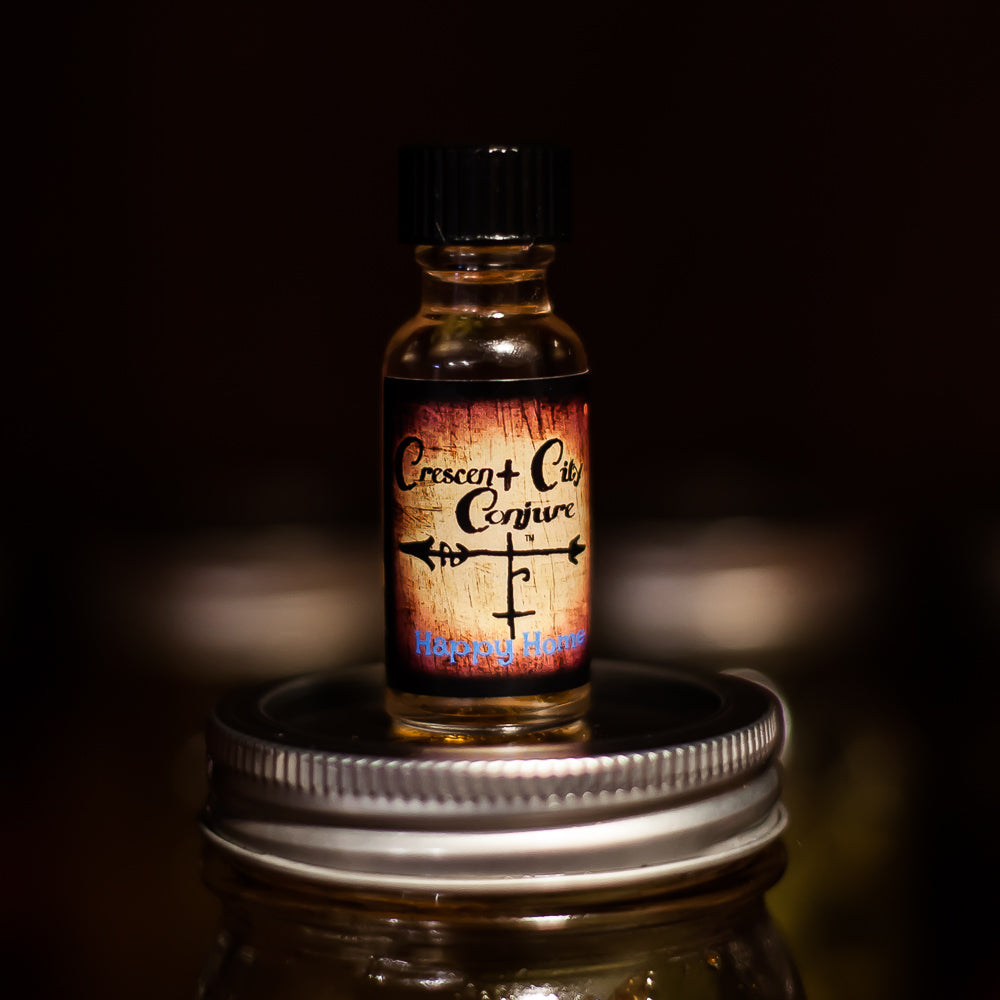
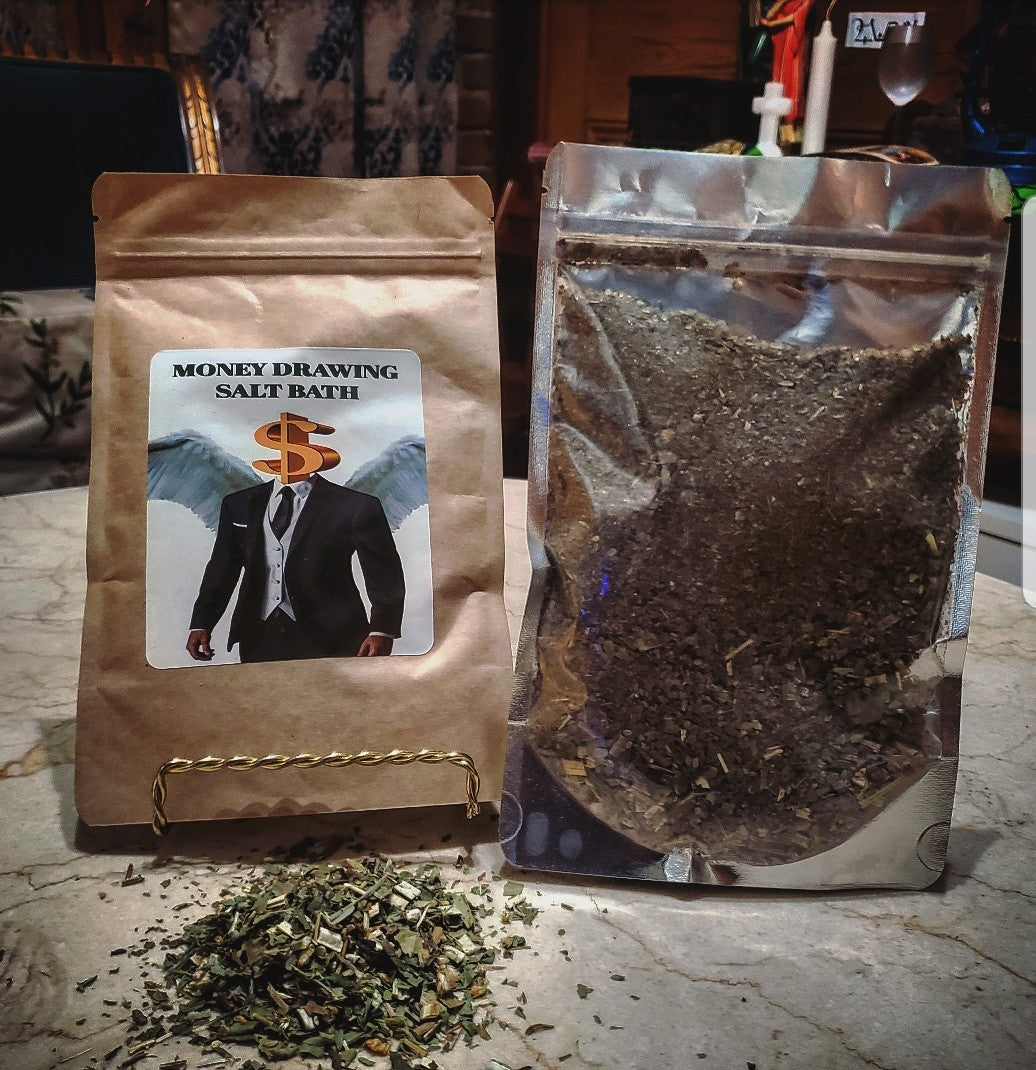
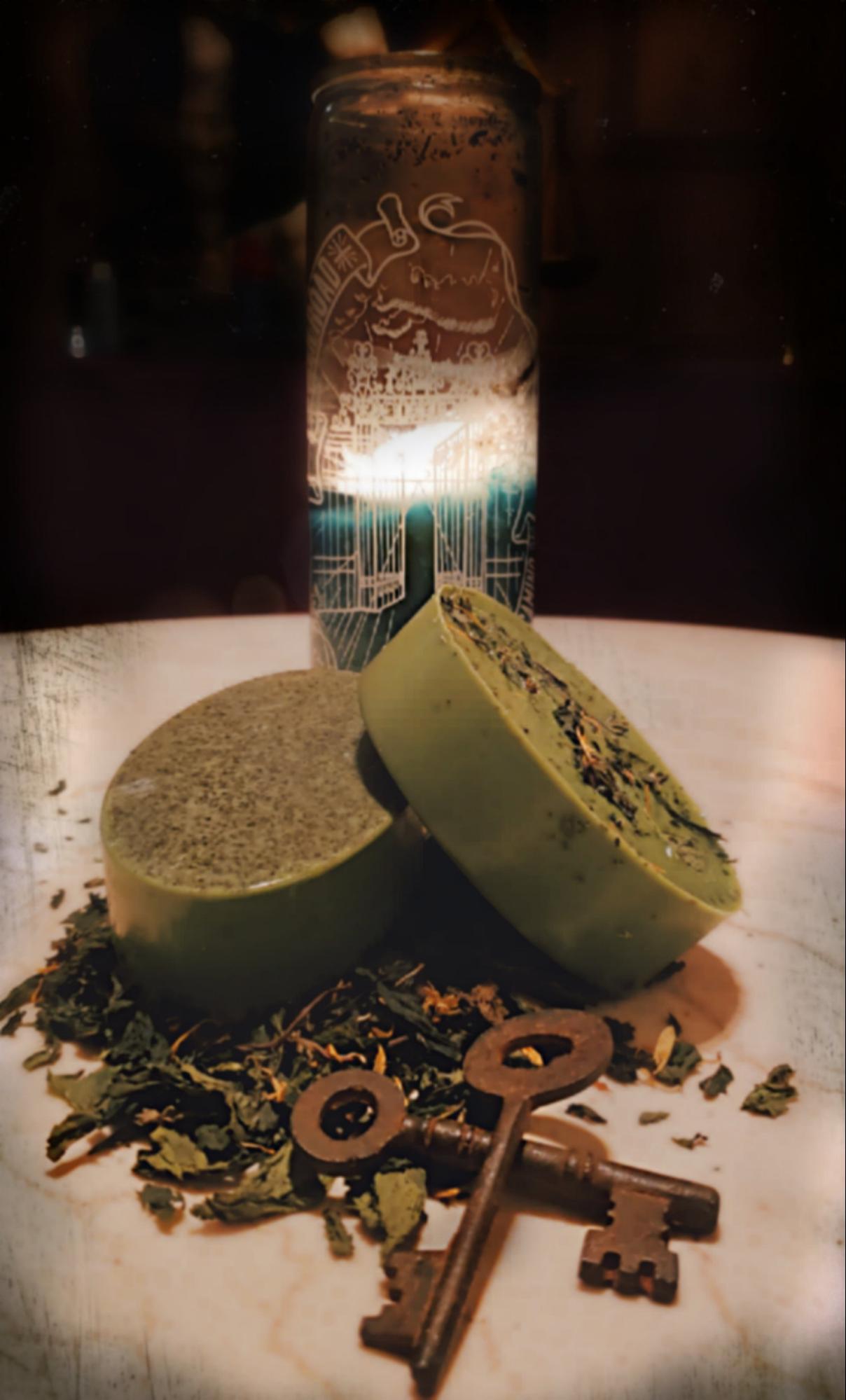
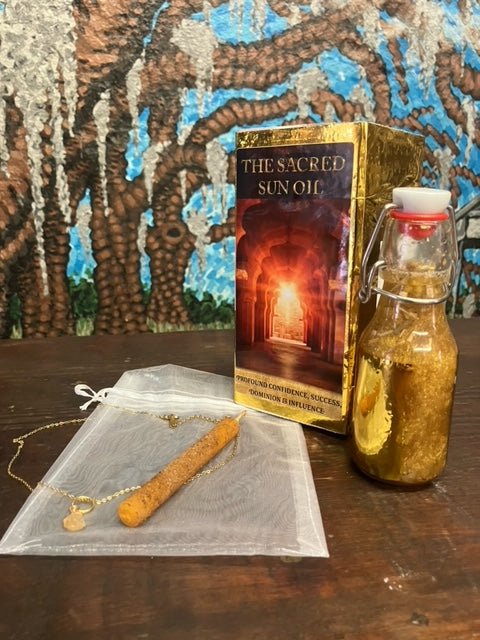
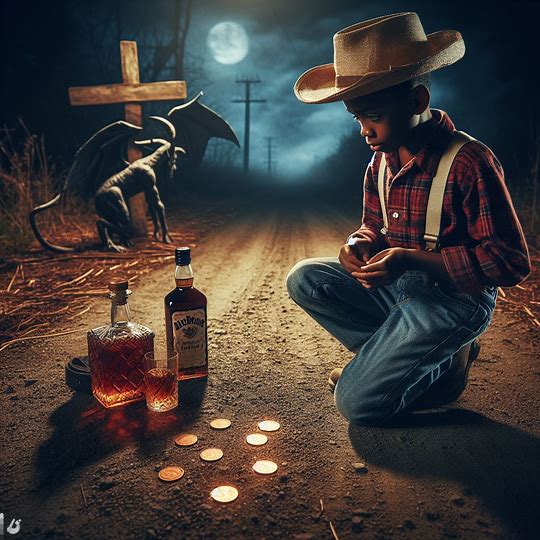



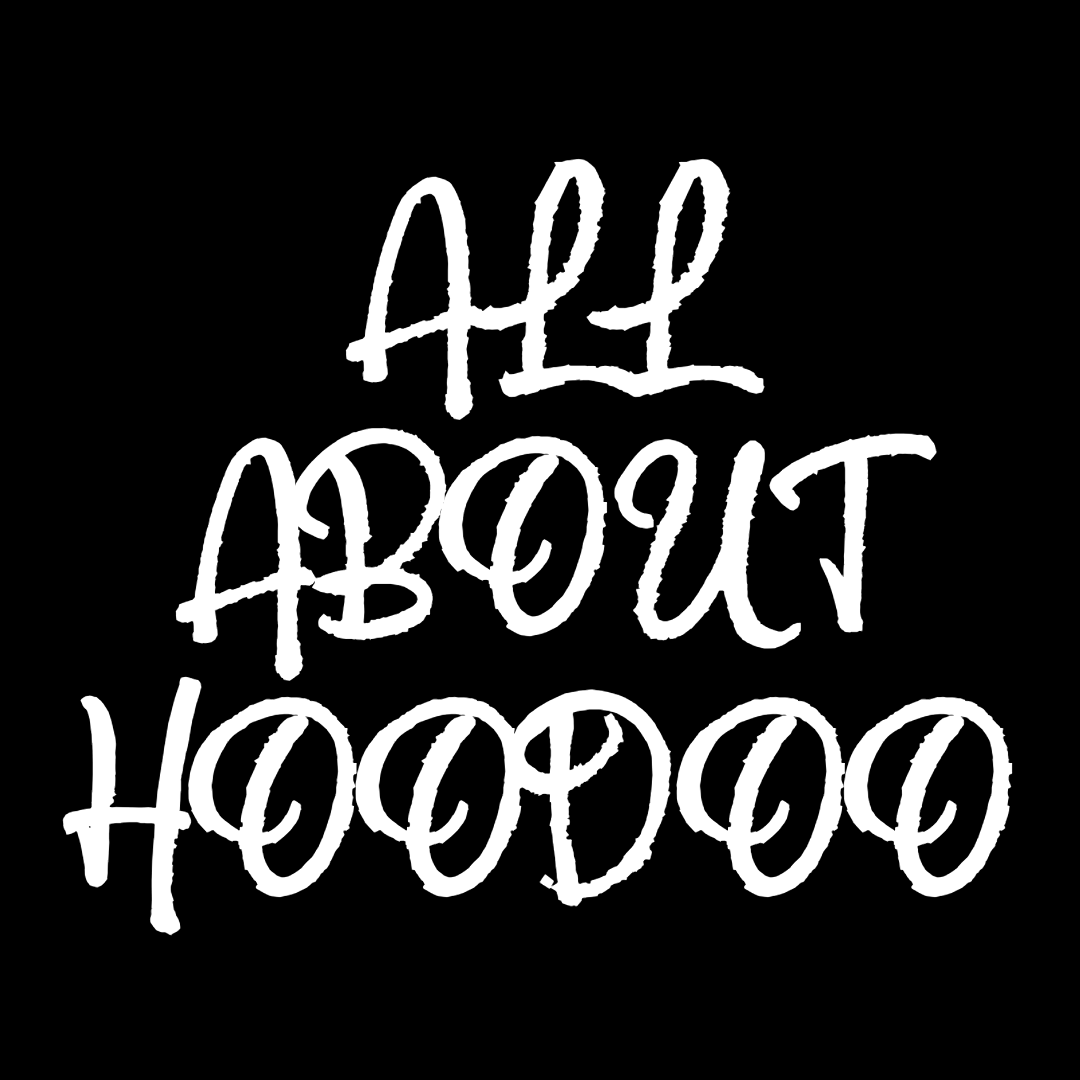
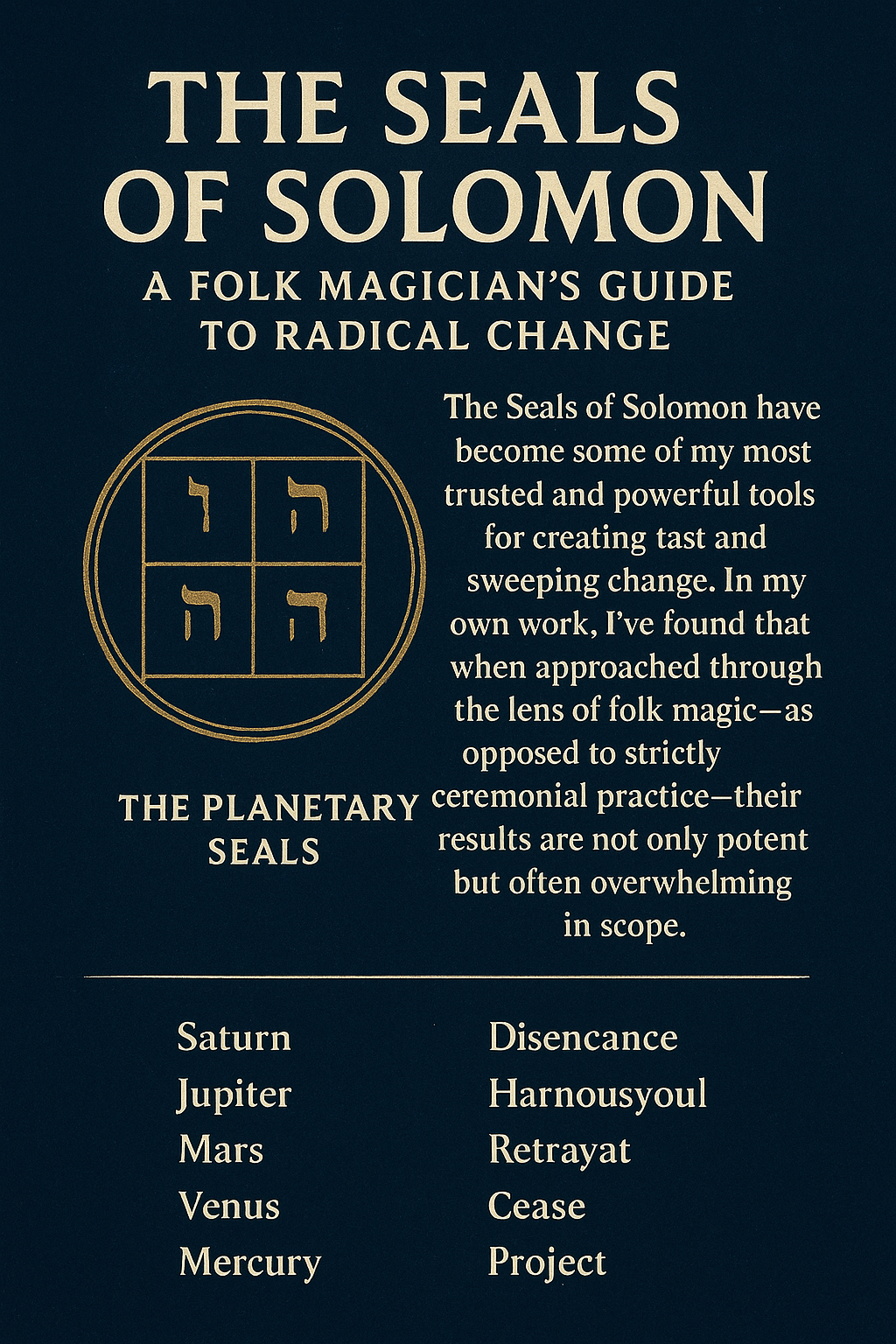
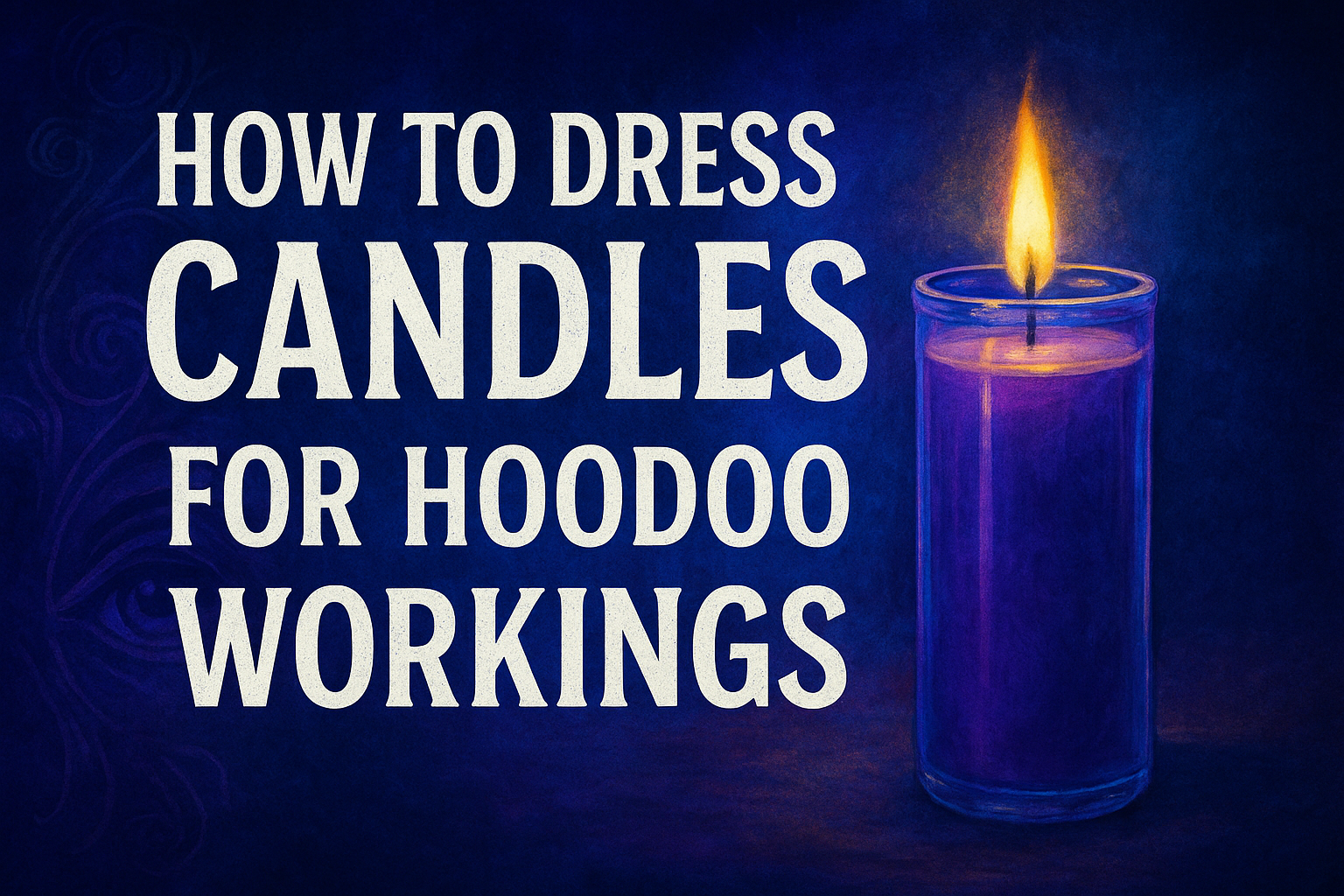
Chris —
This is the third time I’ve read this article since visiting your shop last year. I will be back